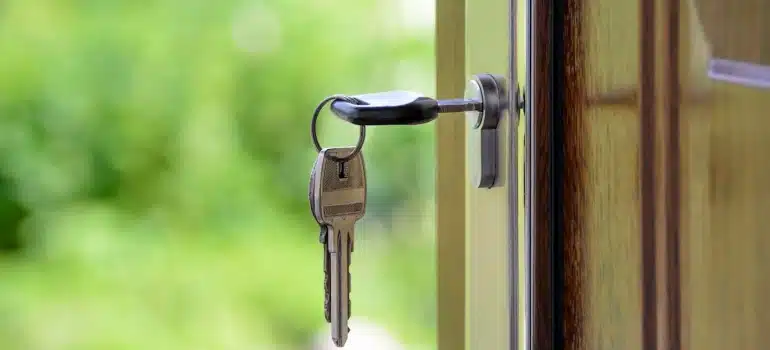Top Reasons Why Residents are Fleeing the Luxurious Lifestyle in Sunny Isles Beach
Sunny Isles Beach sells a picture-perfect lifestyle. Ocean views. Tower amenities. Hotel-level service. Some residents still choose to leave for reasons that have little to do with rent or HOA fees. While high costs do play a role, non-financial drivers weigh just as heavily, sometimes more. So here’s what ex-residents (and data) tell us at Pro Movers Miami, giving you a clearer picture of life behind the luxurious lifestyle in Sunny Isles Beach before you decide where to go next.
Cost factors are only part of the story
Sunny Isles Beach remains one of the priciest places to live in Florida. Median home values are well above the state average, and rental rates run nearly 50% higher than in other metro areas. Condo fees and insurance costs add even more to monthly budgets. For some households, maintaining this lifestyle becomes unsustainable.
That said, money is rarely the only driver. Groceries, utilities, and services are only slightly above the national average, which means most of the gap comes from housing. Many residents stay despite the high cost of living in Sunny Isles Beach, but eventually decide that other non-financial factors, like schools, commute time, or community, carry more weight.

Community culture can feel transient
Sunny Isles Beach has one of the highest shares of foreign-born residents in Florida, about 65% compared to 22% statewide. The median age hovers around 49, making it older than Miami-Dade overall. On top of that, 16% of residents moved within the past year.
What does this mean? The community is diverse and international, but also highly mobile. People may enjoy exposure to different cultures but miss long-term neighborhood bonds. For families who value continuity (like seeing the same parents at school events year after year), the seasonal and investment-driven housing market can feel unstable.
Some end up choosing Broward suburbs or Coral Gables neighborhoods where permanent residency rates are higher and community ties are stronger.
Family and school decisions pull households elsewhere
Education is often a relocation trigger. The local Norman S. Edelcup/Sunny Isles Beach K-8 school carries an A rating from Miami-Dade County. The district itself is the third-largest in the U.S., serving nearly 350,000 students.
Despite the strong grade, families sometimes look elsewhere. Why? Magnet and choice programs across the county create competition, and some parents want guaranteed access to language immersion, STEM, or arts pathways.
Others prefer districts where feeder patterns to high school are clearer, without the uncertainty of boundary changes. In practice, this means families may leave the locale with movers in Sunny Isles Beach, not because the schools are weak, but because they want more predictability and program fit.
High-rise life can feel repetitive
Collins Avenue is lined with luxury towers and condo-hotels. Transit studies describe the corridor as dominated by high-rise residential clusters, making it ideal for investors and vacationers.
For some permanent residents, the setting lacks variety. There are fewer single-family streets, playgrounds within walking distance, or neighborhood events compared to inland communities. The lifestyle appeals to those who prize convenience and beachfront amenities.
Yet parents with young children or residents seeking diverse nightlife and arts often describe the daily rhythm as “hotel-like”, polished but limited. This is why many younger professionals relocate with long distance movers Miami offers closer to downtown Miami or Wynwood, where cultural options and social networks are more dynamic.

Job-market pulls and commute fatigue
The average commute for Sunny Isles Beach residents is about 33 minutes, which is above the U.S. average. Major job hubs like Brickell, Downtown Miami, and Doral aren’t nearby, forcing many workers onto causeways or the congested Palmetto Expressway.
In 2024, Miami ranked #6 in the U.S. for traffic congestion. Drivers lost 74 hours on average sitting in traffic, equal to nearly two full workweeks. That wasted time also translated into $1,325 in direct costs per driver.
For professionals, these numbers are more than statistics. Long commutes reduce family time and increase stress. Many residents conclude that moving closer to their offices with high-end movers offers a better return than staying in a tower with beach access but sacrificing hours each week on the road.
Seasonal crowding and tourism patterns
Tourism drives the local economy. Hotels, short-term rentals, and condo-hotels keep the city lively year-round, especially during the winter months. City planning reports highlight how bus routes and city services are structured to handle high visitor flow along Collins Avenue.
This creates a vibrant atmosphere for some, but for permanent residents, it can mean crowded lobbies, busy elevators, and competition for parking during peak season. Families who want quieter streets often decide to trade luxury amenities for neighborhoods less tied to tourist schedules.
Safety on the road (more than crime) worries parents
Crime rates in Sunny Isles Beach are moderate compared to national averages, but residents point to road safety as the bigger concern. Florida consistently ranks as one of the most dangerous states for pedestrians, and Miami-Fort Lauderdale scores among the worst U.S. metros in “Dangerous by Design” reports.
Collins Avenue, the city’s main artery, is crowded with drivers from all over the country, ride-shares, and tourists unfamiliar with local traffic patterns. Sunny Isles Beach Police frequently run enforcement operations to address pedestrian and driver conflicts.
For families with children, even the perception of unsafe crossings can outweigh the perks of a luxurious lifestyle in Sunny Isles Beach and beachside living. This is a major reason some households look to calmer suburbs with lower traffic intensity.

“New horizons” and life stage changes
Miami-Dade County as a whole shows negative domestic migration. More people leave for other U.S. counties than arrive, even though international arrivals offset the loss.
Sunny Isles Beach follows the same trend. Many residents move with moving companies Miami Dade offers north to Broward or Palm Beach, where homes often come with more space, larger yards, and a slower pace. Others relocate out of state entirely, chasing different climates or job opportunities.
Often, it’s not about dissatisfaction but life stages. A young couple might enjoy the high-rise years, but once kids arrive, the need for schools, space, and stability grows.
Key questions residents ask before deciding to move
Many residents weigh the same concerns and practical details before choosing whether to relocate.
Q: Why are families leaving Sunny Isles Beach?
A: School boundaries, commute time, and the lack of permanent community ties often push families to relocate.
Q: Is Sunny Isles Beach mainly for tourists?
A: It hosts both permanent residents and visitors, but many properties cater to seasonal stays, which shapes the overall atmosphere.
Q: What cities are popular alternatives?
A: Nearby Aventura, Weston, and Coral Gables are popular, as well as Fort Lauderdale and Palm Beach County.
Q: Is traffic really that bad?
A: Yes. In 2024, Miami drivers lost 74 hours to congestion — sixth-worst in the U.S.
Q: Is moving mostly about money?
A: Not always. Lifestyle, culture fit, schools, and commute patterns are often bigger factors than costs.
Q: How safe is Sunny Isles Beach for families?
A: Violent crime rates are moderate, but traffic safety is a bigger concern, especially for pedestrians and children.
Q: Are the schools in Sunny Isles Beach good?
A: Yes, the local K-8 school is A-rated. However, some families move to other districts for magnet programs or clearer feeder patterns.
Q: Do many residents leave Sunny Isles Beach permanently?
A: Yes. Census data shows steady domestic out-migration, with many residents moving to Broward or Palm Beach for more space and quieter neighborhoods.
Q: What lifestyle changes drive people to leave?
A: Some residents grow tired of high-rise living, seasonal crowding, and limited cultural or recreational variety, leading them to seek new horizons.

From Sunny Isles to new opportunities
Choosing where to live goes beyond square footage, ocean views, or a luxurious lifestyle in Sunny Isles Beach. What matters most is how well a place supports your daily needs, long-term goals, and overall peace of mind. Sunny Isles Beach appeals to many, but some residents eventually want a setting with stronger community ties, broader cultural opportunities, and easier access to career centers.
To them, choosing to move to Miami often feels like the natural next step. The city offers thriving business hubs, diverse neighborhoods, and activities for every stage of life. With Pro Movers Miami, you’ll have the support needed to make the transition smooth and straightforward.
